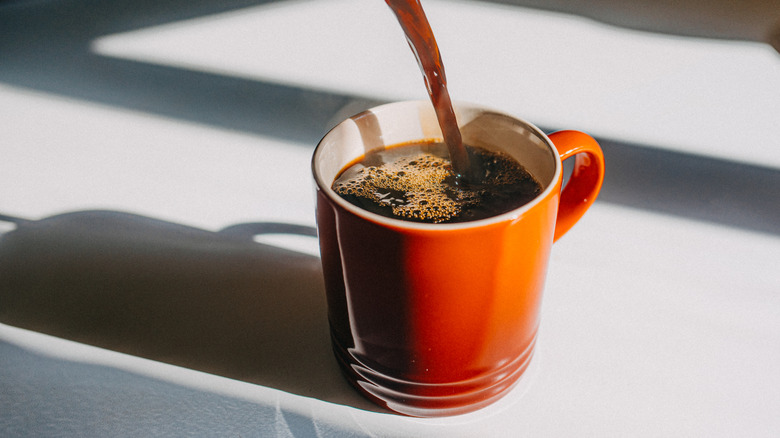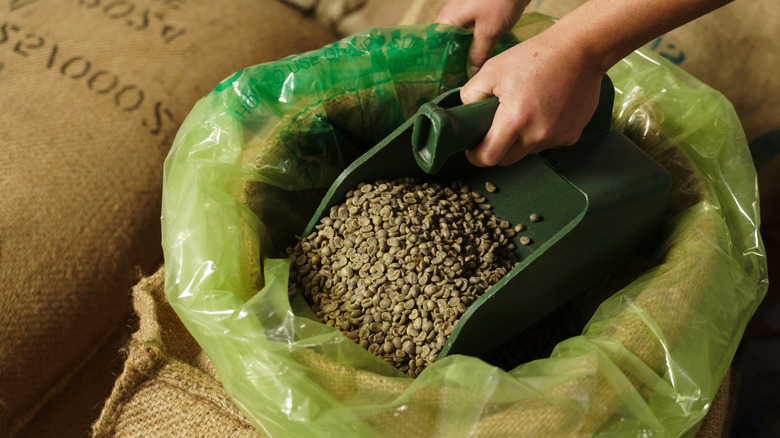Is There Really Zero Caffeine In Decaf Coffee?
Decaffeinated coffee often gets a bad rap. Naysayers like to poke fun at the pep-free beverage, wondering what the point of drinking it even is. But lots of people drink decaf for various reasons. People with a sensitivity to stimulants might opt for decaf, and others may drink it at night when they don't want their sleep to be affected. These people are happy to come to the defense of decaf, but is it actually caffeine-free? In truth, there is still some caffeine clinging to decaf coffee.
When coffee beans go through the steps to become decaffeinated, about 97% of the caffeine is removed, although some processes take out up to 99.9%. In other words, an 8-ounce cup of regular coffee has anywhere from 70 to 140 milligrams of caffeine in it. The same amount of decaf typically contains anywhere from 2 to 7 milligrams of caffeine. So, if you are aiming to consume no caffeine at all, you might want to rethink even decaf coffee. Interestingly, decaffeinated dark roast and instant decaf (which is fancier than it's ever been) actually contain less caffeine, which is good news for decaf drinkers looking for the least possible amount of zip.
How is caffeine removed from coffee?
To remove caffeine from coffee, it has to go through one of three processes: solvent-based or direct-contact, Swiss water, or carbon dioxide. With each method, fresh coffee beans that have not yet been roasted are steamed or submerged in water. This causes the pores of the beans to open so that the caffeine can be removed. For the solvent-based extraction process, coffee beans are treated with methylene chloride and ethyl acetate, which bond with the caffeine molecules and remove them from the bean as they evaporate.
If you reach for organic decaf coffee, know that it has been through the Swiss water process. The soaked beans leach flavor and caffeine out into the water, which is then passed through a charcoal filter system to remove the caffeine. After that, the beans regain their flavor by sitting in that same water again. With this method, less than 1% of caffeine remains in the coffee beans.
The carbon dioxide method requires the soaked green beans to be placed into a vessel, which is then pumped with liquid carbon dioxide. The pressure and heat are so great that the carbon dioxide absorbs the caffeine in the beans.
Despite the complex measures taken with these three methods, none can 100% guarantee caffeine-free coffee. So if you reach for decaf and notice even a small pep in your step, you know why.

